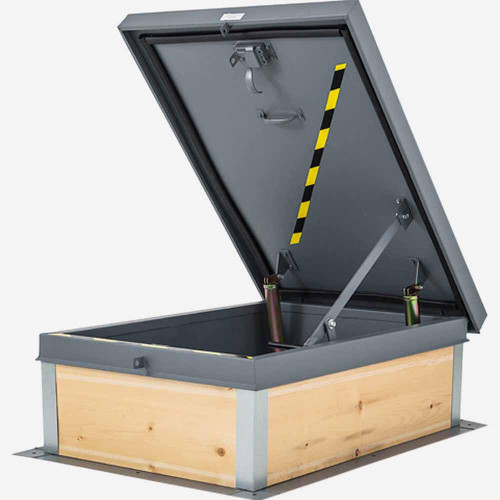Urban Innovation: Combining Green Roofs and Roof Access Hatches for Sustainable Cities
Cities today face a unique challenge: balancing growth with environmental responsibility. Urban areas often struggle with the heat island effect, stormwater runoff, and limited green space. It takes innovative design solutions to create healthy and livable cities. One such solution is strategically integrating roof access hatches with green roofs.
A Multifaceted Solution
Green roofs are basically gardens on rooftops that offer a few environmental benefits.
For one, they help mitigate the urban heat island effect by absorbing sunlight and releasing it as water vapor. This can significantly reduce cooling costs in buildings.
Next, green roofs also act as natural sponges, absorbing rainwater and reducing stormwater runoff that can overwhelm drainage systems.
They also improve air quality by filtering dust particles and other pollutants. The vegetation layer on a green roof also provides insulation, lowering heating costs in winter.
Finally, green roofs create valuable habitats for pollinators and other urban wildlife.
While green roofs do offer lots of benefits, they also come with limitations. The weight of the soil and vegetation needs to be factored into the building’s structural capacity.
Additionally, green roofs require ongoing maintenance, such as planting, irrigation, and potential repairs.
How Roof Access Hatches Come Into Play
Roof access hatches, like the BAC-RAH roof access hatch, are crucial to maximizing the benefits of green roofs. They provide maintenance crews with safe and convenient access to rooftops.
Integrating roof access hatches during the design and planning stages is a wise and practical move for designers and builders. The hatches’ placement, size, and weight capacity need to be carefully considered to ensure they blend seamlessly with the overall green roof design while remaining structurally sound.
Benefits Beyond Maintenance
Roof access hatches offer more than just facilitating maintenance. They open doors for future uses of the green roof. With proper planning, these hatches can provide access to rooftop gardens or even urban agriculture initiatives. This can be quite valuable in dense urban areas with limited access to ground-level gardening space.
Additionally, roof access hatches allow for routine inspections and monitoring of the green roof system, ensuring its optimal health and performance.
Challenges and Solutions
While roof access hatches offer a wealth of benefits, there are also some challenges to consider.
Maintaining the roof’s waterproof integrity is one. Specialized hatches with watertight seals help prevent leaks. Safety is another crucial concern. Fall protection systems—such as guardrails or safety lines—should be incorporated around the hatches to ensure worker safety.
Finally, the structural integration of the hatches with the green roof system needs careful planning to ensure that the underlying structure supports the weight of the hatches and access points.
Fortunately, solutions exist for these challenges. Manufacturers offer a variety of waterproof hatches specifically designed for green roof applications. When it comes to safety, established building codes and best practices provide clear guidelines for fall protection systems on rooftops.
Lastly, collaborating with structural engineers during the design phase ensures that the hatches seamlessly integrate with the green roof system without compromising structural integrity.
A Greener Urban Future
The future of green roof design is brimming with exciting possibilities. Modular green roof systems offer greater flexibility and ease of installation. Automated irrigation and monitoring systems can further reduce maintenance requirements.
Additionally, some innovative designs integrate green roofs with renewable energy technologies like solar panels, creating a truly sustainable rooftop ecosystem.
Wrapping It Up
Combining roof hatches with green roofs represents a powerful design strategy for creating more environmentally friendly cities. By harnessing the environmental benefits of green roofs while ensuring ease of maintenance and unlocking future possibilities, this approach offers a win-win solution for urban planners, architects, and the environment.
As we strive to create healthier, more livable cities for the future, embracing this forward-thinking solution makes you one step closer to achieving that goal.
